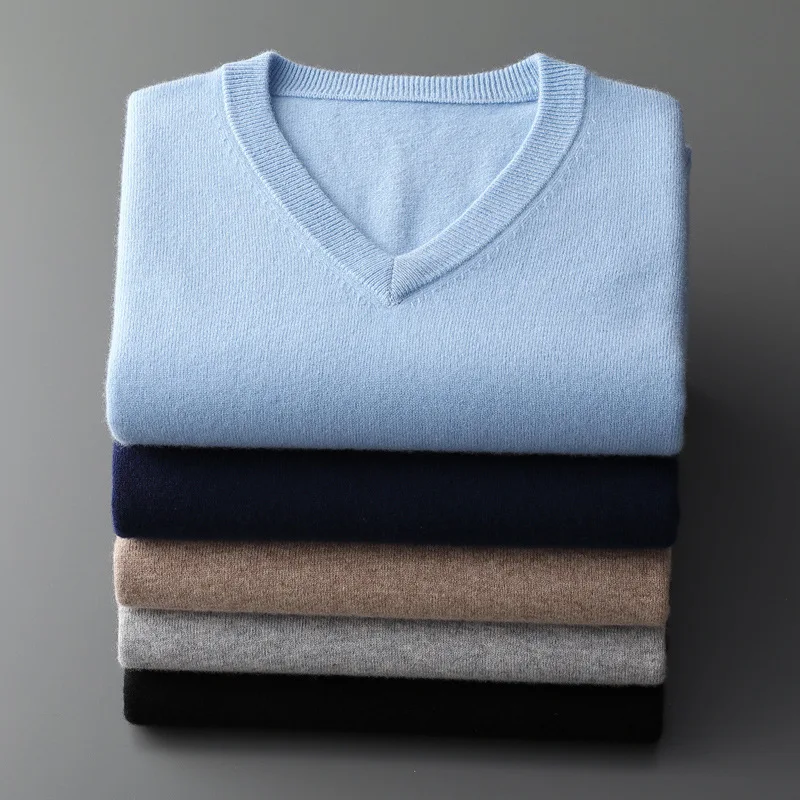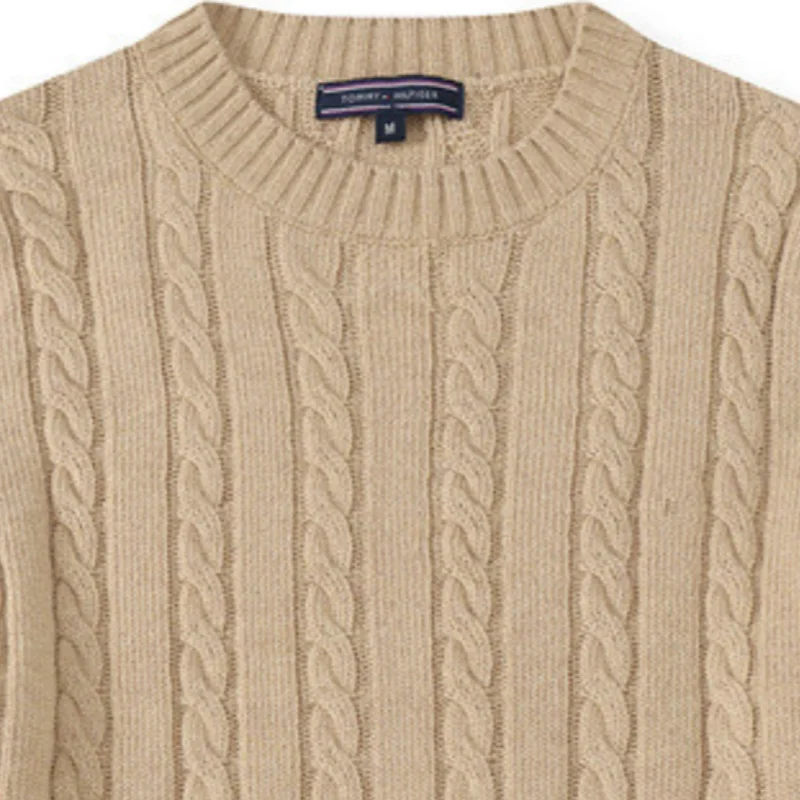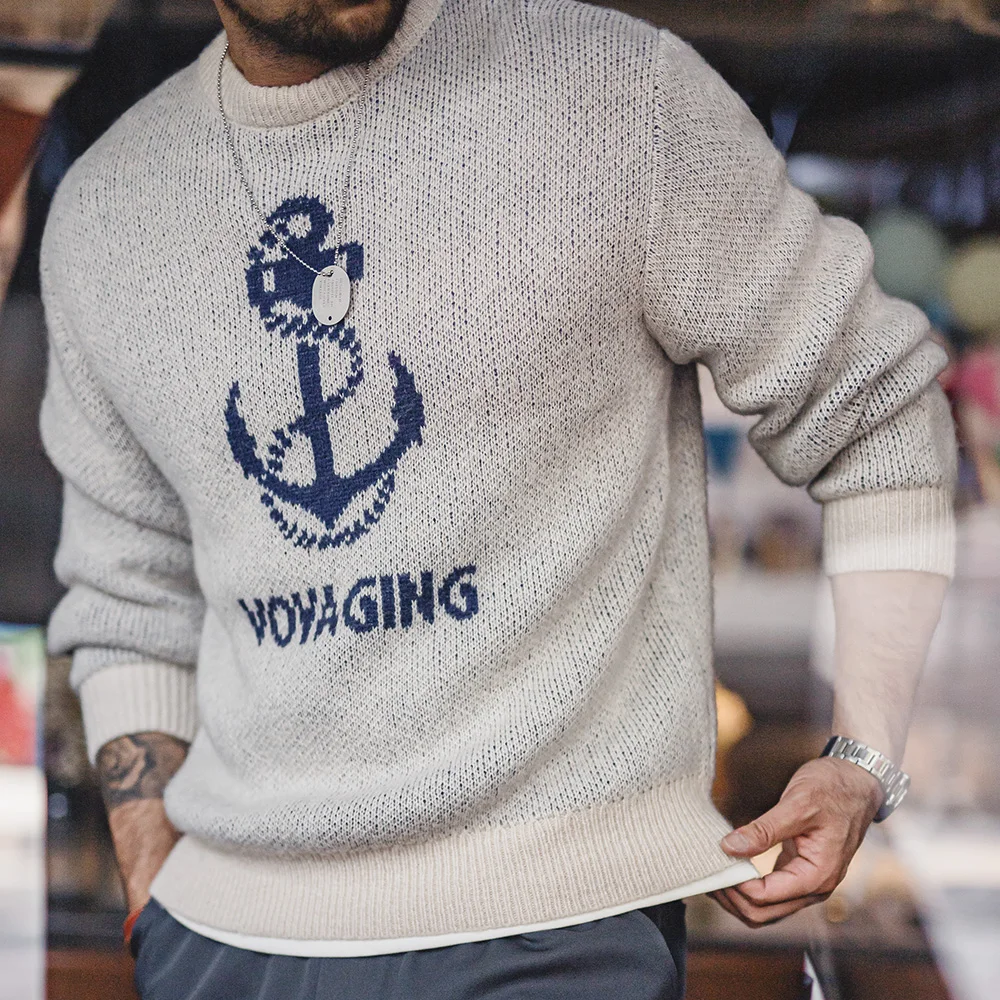Understanding Cashmere Yarn Weight Basics
When we talk about cashmere yarn weight, we’re not discussing how much a ball of yarn weighs on a scale. Instead, we’re referring to the thickness or diameter of the yarn itself. This measurement is crucial when working with luxury fibers like cashmere, as it directly impacts how your finished project will look and feel.
Cashmere yarn weight is particularly important because:
- It determines the drape and flow of your finished piece
- It affects the warmth-to-weight ratio (cashmere is naturally warm, but different weights provide different levels of insulation)
- It influences which projects the yarn is suitable for
- It impacts how your stitches will appear and how the fabric will behave
The difference between weights is remarkable. A lace weight cashmere shawl feels ethereal and almost weightless while still providing surprising warmth. In contrast, a DK (Double Knit) weight sweater offers substantial coziness while maintaining the luxury feel cashmere is known for.
What makes this particularly significant is cashmere’s precious nature. A single cashmere goat produces only 150-200g of fiber annually, making every strand valuable. Understanding yarn weights helps ensure you’re using this precious resource effectively for your specific project.
In this guide, we’ll explore everything from standardized weight classifications to practical measurement techniques, helping you navigate the comprehensive guide cashmere yarn weight systems with confidence. We’ll also examine how weight relates to 2-ply vs 4-ply cashmere construction, which further affects yarn characteristics.
The Craft Yarn Council Weight Classification System
The Craft Yarn Council (CYC) has developed a standardized yarn weight system that has become the industry standard in North America and beyond. This classification system organizes yarns into categories numbered from 0 (finest) to 7 (heaviest), making it easier for crafters to select appropriate yarns for their projects.
Understanding this system is particularly valuable when working with cashmere, as it helps you identify which weight will achieve your desired results in terms of fabric drape, warmth, and appearance.
| CYC Category | Name | Description | Recommended Needle Size | Recommended Hook Size | Gauge (4” × 4”) | Typical Cashmere Projects |
|---|---|---|---|---|---|---|
| 0 | Lace | Thread-like, delicate | 1.5-2.25mm (US 0-1) | 1.6-1.4mm (US 7-8) | 33-40 sts | Heirloom shawls, delicate scarves |
| 1 | Super Fine | Very thin | 2.25-3.25mm (US 1-3) | 2.1-2.75mm (US 4-6) | 27-32 sts | Lightweight accessories, baby items |
| 2 | Fine | Thin but versatile | 3.25-3.75mm (US 3-5) | 2.75-3.5mm (US 2-4) | 23-26 sts | Socks, lightweight sweaters |
| 3 | Light | Medium-light | 3.75-4.5mm (US 5-7) | 3.5-4.5mm (US E-7) | 21-24 sts | Versatile sweaters, accessories |
| 4 | Medium | Standard | 4.5-5.5mm (US 7-9) | 4.5-5.5mm (US 7-I) | 16-20 sts | Everyday sweaters, warm accessories |
| 5 | Bulky | Thick | 5.5-8mm (US 9-11) | 5.5-6.5mm (US I-K) | 12-15 sts | Quick accessories, statement pieces |
| 6 | Super Bulky | Very thick | 8mm+ (US 11+) | 6.5-9mm (US K-M) | 7-11 sts | Ultra-warm accessories, quick projects |
| 7 | Jumbo | Extremely thick | 15mm+ (US 19+) | 9mm+ (US M+) | 6 sts or fewer | Dramatic accessories, art pieces |
It’s worth noting that while the CYC system covers all weights, cashmere is most commonly available in categories 0-4. Pure cashmere in categories 5-7 (Bulky, Super Bulky, and Jumbo) is relatively rare and often found only in blends with other fibers. This is partly due to cashmere’s fine nature and partly because thicker yarns require significantly more fiber, making them extremely expensive in pure cashmere form.
This standardized system provides a helpful reference point for understanding cashmere ply thickness and how it affects your knitting or crochet projects. You’ll find excellent examples of these different weights in action in our collection of cashmere sweaters.
The New Metric (Nm) System for Cashmere Yarn
While the Craft Yarn Council system is widespread, many luxury yarn producers and European manufacturers use the New Metric (Nm) system to classify their cashmere yarns. This system is particularly common for high-end cashmere and other fine fibers.
The Nm system works on a different principle than the CYC categories. The formula is:
Nm = length in meters ÷ weight in grams
More specifically, it represents how many kilometers of yarn you get per kilogram. The higher the Nm number, the finer the yarn. This is an inverse relationship to the CYC system, where higher numbers indicate thicker yarns.
You’ll often see cashmere yarns labeled with notations like “2/28Nm.” Here’s how to decode this:
– The first number (2) indicates the number of plies
– The second number (28) is the Nm count for each single ply
– This means each single ply is 28,000 meters per kilogram before plying
Common Nm values for cashmere and their approximate CYC equivalents include:
– 2/60Nm to 2/48Nm ≈ Lace weight (Category 0)
– 2/28Nm to 2/32Nm ≈ Fingering/Sock weight (Category 1)
– 2/18Nm to 2/24Nm ≈ Sport weight (Category 2)
– 2/14Nm to 2/16Nm ≈ DK weight (Category 3)
– 2/8Nm to 2/12Nm ≈ Worsted weight (Category 4)
Understanding this system helps you interpret labels on luxury cashmere yarns, particularly those from Italian or Scottish mills that often use this classification system. It’s especially helpful when shopping for yarn to make cashmere cable knit sweaters where yarn weight critically affects stitch definition.
Understanding Ply in Cashmere Yarns
“Ply” refers to the number of single strands twisted together to create the final yarn. This is an important concept that’s often confused with weight category, but they’re not the same thing. A 4-ply yarn isn’t necessarily thicker than a 2-ply yarn—it depends on the thickness of each individual strand.
In cashmere yarns, ply affects several important characteristics:
- Strength: Multiple plies typically create stronger yarn that’s less likely to break during knitting or wear
- Roundness: Higher ply yarns tend to be rounder and more even in shape
- Warmth: Multiple plies create more air pockets for insulation
- Stitch definition: Different ply structures affect how clearly patterns and textures appear

For example, a 1-ply (single) cashmere thread at 2/28Nm equivalent creates fabric with excellent stitch definition and a soft halo effect but might be more delicate. In contrast, a 4-ply cashmere at an equivalent total weight will create a rounder, more resilient yarn with less drape but more durability.
The amount of twist used in plying also affects the yarn’s characteristics. High-twist plying creates firmer, more resilient yarns with excellent stitch definition and less halo. Low-twist plying produces softer yarns with more bloom and halo but less durability.
This understanding of ply structure complements your knowledge of weight categories and helps explain why two cashmere yarns of the same weight class might behave quite differently. For more detailed information about selecting the right structure for your project, explore our guide on choosing right cashmere ply.
Wraps Per Inch: A Practical Measurement Method
When you encounter unmarked cashmere yarn or need to verify a yarn’s weight category, Wraps Per Inch (WPI) is an invaluable measurement technique. This practical method helps you determine yarn weight without specialized equipment.
To measure WPI:
– Wrap the yarn around a ruler, pencil, or dowel
– Wind the yarn so each wrap sits next to the previous one without overlapping or stretching
– Count how many wraps fit within one inch
– Compare this number to standard WPI ranges for yarn categories
Quick WPI reference chart:
– Lace (0): 35+ WPI
– Super Fine/Fingering (1): 19-22 WPI
– Fine/Sport (2): 15-18 WPI
– Light/DK (3): 12-14 WPI
– Medium/Worsted (4): 9-11 WPI
– Bulky (5): 7-8 WPI
– Super Bulky (6): 5-6 WPI
– Jumbo (7): 1-4 WPI
This method is especially useful when working with vintage or recycled cashmere, unmarked skeins, or when comparing yarns from different manufacturers who might use varying terminology.
WPI gives you a standardized way to evaluate any cashmere yarn you encounter, helping you make appropriate substitutions or determine which projects would be suitable. You can see excellent examples of various yarn weights used in our collection of men’s cashmere pullovers, which range from lighter to medium weights depending on the style.
Lace Weight Cashmere (Category 0)
Lace weight is the finest category of cashmere yarn available, typically falling in the Nm range of 2/60Nm to 2/48Nm. This gossamer-thin yarn creates incredibly lightweight fabric with exceptional drape and surprising warmth despite its delicate appearance.
Characteristics of lace weight cashmere:
– Extremely fine and delicate
– Creates fabric with exceptional drape and flow
– Offers warmth without bulk
– Can be knit at different gauges for varying levels of transparency
A typical 50g skein of lace weight cashmere yields approximately 400-600 yards (366-549 meters), making it quite economical for larger projects despite its higher price point per gram. Lace weight cashmere typically retails for $45-75 per 25g, reflecting the additional processing required to create such fine, consistent yarn.
Ideal projects for lace weight cashmere include heirloom shawls, wedding accessories, delicate scarves, and fine baby garments where lightness and softness are paramount.
Working with lace weight cashmere does require patience and attention. Its delicate nature means it can be challenging for beginners. Smooth needles with sharp tips work best, and many crafters find working under good lighting essential for this fine yarn.
Fingering Weight Cashmere (Category 1)
Fingering weight cashmere (also called sock weight) typically falls in the Nm range of 2/28Nm to 2/32Nm. This versatile fine weight strikes an excellent balance between delicacy and practicality.
Characteristics of fingering weight cashmere:
– Fine but stronger than lace weight
– Excellent stitch definition for textured patterns
– Versatile for many project types
– Creates fabric with beautiful drape while maintaining structure
A standard 50g skein of fingering weight cashmere yields approximately 200-300 yards (183-274 meters). This makes it suitable for projects ranging from socks and gloves to lightweight scarves and baby garments.
Fingering weight cashmere excels in projects where you want to showcase beautiful stitch patterns while maintaining a lightweight fabric. The excellent stitch definition allows cables, lace, and textured stitches to stand out clearly while the natural elasticity of quality cashmere helps maintain the fabric’s shape.
When working with fingering weight cashmere, consider using needles one size larger than recommended for wool of the same weight if you want to enhance the yarn’s natural drape. For more structured items like socks, stick with the recommended needle size for better durability.
Understanding the difference between lightweight and heavyweight cashmere can help you select the best option for your specific project needs.
Sport Weight Cashmere (Category 2)
Sport weight cashmere, typically in the Nm range of 2/18Nm to 2/24Nm, occupies the sweet spot between fingering and DK weights. This versatile medium-fine weight offers an excellent balance of detailed stitch definition and reasonable knitting speed.
Characteristics of sport weight cashmere:
– Moderately fine with good strength
– Excellent balance of drape and structure
– Versatile for both warm-weather and cool-weather garments
– Creates fabric with beautiful stitch definition
A typical 50g skein of sport weight cashmere yields approximately 150-180 yards (137-165 meters). This makes it economical for medium-sized projects while still providing enough yardage to complete accessories without joining too many skeins.
Sport weight cashmere is particularly well-suited for lightweight sweaters, textured scarves, hats, and mittens. It’s often chosen for children’s garments due to its balance of softness and relative durability compared to finer weights.
This weight also works beautifully for colorwork projects, as the yarn is fine enough to handle detail but substantial enough to be manageable when working with multiple strands. The natural elasticity of cashmere helps colorwork maintain an even tension.
DK Weight Cashmere (Category 3)
DK (Double Knit) weight cashmere, falling in the Nm range of 2/14Nm to 2/16Nm, is often considered the “sweet spot” for cashmere garments. It provides the perfect balance of drape, warmth, and knitting efficiency.
Characteristics of DK weight cashmere:
– Medium weight with excellent versatility
– Substantial drape with good structure
– Efficient to knit while maintaining luxury feel
– Creates fabric with beautiful stitch definition and a soft halo

A typical 50g skein of DK weight cashmere yields approximately 120-140 yards (110-128 meters). This makes it suitable for a wide range of projects from sweaters and vests to hats, scarves, and cowls.
DK weight cashmere is particularly popular for sweaters as it creates a fabric with enough substance to provide warmth without excessive bulk. The resulting garments have beautiful drape while maintaining their shape. You can see the luxurious effect of this weight in our women’s cashmere pullovers collection.
When working with DK weight cashmere, popular needle sizes range from US 5-7 (3.75-4.5mm), though this can vary based on your personal tension and the desired fabric density. For drapier fabrics, consider going up a needle size; for more structured items, stick with the recommended gauge.
Cashmere Wrap Sweaters, Women's Cashmere Pullovers
$75.89 Select options This product has multiple variants. The options may be chosen on the product pageCashmere Cable Knit Sweaters, Women's Cashmere Pullovers
Price range: $111.82 through $112.93 Select options This product has multiple variants. The options may be chosen on the product pageCropped Cashmere Sweaters, Women's Cashmere Pullovers
$155.77 Select options This product has multiple variants. The options may be chosen on the product pageOversized Cashmere Sweaters, Plus Size Cashmere Sweaters, Women's V-Neck Cashmere Sweaters
$136.87 Select options This product has multiple variants. The options may be chosen on the product page- Price range: $108.11 through $130.03 Select options This product has multiple variants. The options may be chosen on the product page
Striped Cashmere Sweaters, Women's Cashmere Pullovers
$139.68 Select options This product has multiple variants. The options may be chosen on the product page
Worsted Weight Cashmere (Category 4)
Worsted weight cashmere, typically in the Nm range of 2/8Nm to 2/12Nm, represents the standard medium weight yarn that many knitters and crocheters are familiar with. It’s the heaviest weight commonly available in pure cashmere.
Characteristics of worsted weight cashmere:
– Medium-heavy with substantial hand feel
– Excellent warmth with moderate drape
– Efficient to knit with quick project completion
– Creates fabric with a beautiful balance of structure and softness
A typical 50g skein of worsted weight cashmere yields approximately 90-110 yards (82-101 meters). This means projects will require more skeins compared to finer weights, increasing the investment in pure cashmere projects.
Worsted weight cashmere is ideal for warm sweaters, winter accessories, and quick-to-knit luxury items where maximum warmth is desired. This weight is commonly found in machine-knit ready-to-wear cashmere sweaters due to its balance of warmth and relative ease of production.
When considering worsted weight cashmere for a project, be mindful of the value equation—this weight uses significantly more fiber per project than finer weights, which is reflected in the overall cost. For some projects, you might consider 70 percent wool 30 percent cashmere blends, which offer similar warmth at a lower price point while maintaining much of cashmere’s softness.
Bulky and Super Bulky Cashmere (Categories 5-6)
Pure cashmere yarn in bulky (Category 5) and super bulky (Category 6) weights is relatively rare. When available, these heavier weights create dramatically textured fabric with exceptional warmth and quick knitting satisfaction.
Most bulky “cashmere” yarns on the market actually contain significant percentages of wool or synthetic content, with cashmere comprising only a portion of the fiber blend. This is primarily due to cost considerations—the amount of cashmere required for bulky yarn makes pure versions extremely expensive.
When pure bulky cashmere is available, it’s often created through specialized processing techniques:
– Chain-plying multiple strands of finer cashmere
– Brushed or lightly felted treatment to increase diameter
– Low-twist construction to maximize loft and volume
These heavy cashmere weights excel in statement accessories like chunky scarves, cowls, and hats where immediate impact and extreme softness are desired. They’re also perfect for luxury gift projects when you need something beautiful on a tight timeline.
If you’re looking for the aesthetic of bulky cashmere without the high cost of pure fiber, consider our cashmere wool cardigans which often use blended yarns to achieve a substantial feel while maintaining cashmere’s signature softness.
How to Determine Unknown Cashmere Yarn Weight
When working with unmarked cashmere yarn—perhaps from a recycled sweater or an unlabeled skein—you can use several practical methods to determine its weight category.
The Wraps Per Inch (WPI) technique is the most accessible approach:
- Find a consistent-width object like a pencil or ruler
- Wrap the yarn around it without stretching or overlapping
- Count how many wraps fit in one inch
- Compare to the WPI chart in the earlier section

Another approach is to create a small gauge swatch:
1. Knit or crochet a 4”×4” swatch using needles/hooks you think are appropriate
2. Count stitches and rows per inch
3. Compare to standard gauge recommendations for different weights
For recycled cashmere yarn from a sweater:
1. Examine the original garment’s fabric density
2. Look for manufacturer information on the label (if available)
3. Compare to similar commercial yarns of known weight
4. Consider the garment type—fine gauge sweaters typically use fingering to DK, while heavier sweaters use worsted
When working with unmarked cashmere, you may need to try several needle or hook sizes before finding the optimal gauge. This exploratory process is worth the effort to achieve the best results with your precious cashmere fiber.
Finding the perfect yarn weight for cashmere sweaters often requires this kind of detective work, especially when working with repurposed materials.
Swatching with Cashmere: Critical Considerations
Swatching—creating a test square of fabric before starting your project—is particularly important with cashmere yarn. This luxury fiber behaves differently from wool or cotton, and understanding these differences through swatching will save you disappointment later.
Why swatching is essential for cashmere projects:
– Cashmere’s exceptional drape can dramatically affect gauge
– The fiber tends to “grow” or relax significantly after washing
– Different weights behave uniquely when blocked
– Swatching helps determine if your chosen weight is appropriate for your project
For accurate cashmere swatching:
1. Make a swatch at least 6”×6” (larger than standard)
2. Include the stitch pattern you plan to use in your project
3. Bind off loosely and measure before washing
4. Wash and block according to your planned garment care method
5. Allow to dry completely and measure again
Cashmere fabric can grow 10-25% in length after blocking, depending on the weight and stitch pattern. This dramatic change means a pre-blocked gauge can be very misleading.
Swatching also helps you evaluate how different cashmere weights will behave in your specific project. The same stitch pattern can look dramatically different in lace weight versus DK weight cashmere.
Understanding these behaviors is crucial for long-term preservation of cashmere fabric, as proper initial gauge assessment ensures your finished pieces maintain their intended dimensions over time.
Choosing the Right Cashmere Weight for Your Project
Selecting the appropriate cashmere weight for your project involves considering several key factors:
- Desired drape and flow
- Required warmth level
- Intended wear frequency and durability needs
- Project timeline and knitting/crochet speed
- Budget considerations
Project recommendations by weight:
– Classic V-neck sweater: DK or Worsted provides ideal balance of drape and structure
– Heirloom wedding shawl: Lace weight creates ethereal fabric with beautiful stitch definition
– Everyday luxury scarf: Sport or DK offers practical warmth without excessive bulk
– Warm winter hat: Worsted or Bulky provides maximum insulation efficiently
When substituting cashmere for other fibers, remember that cashmere typically creates a more drapey fabric than wool of the same weight. You might need to adjust your needle size down to maintain structure, especially for garments that need to hold their shape.
Cost-effectiveness also varies significantly across weights. Finer weights like lace and fingering provide more yardage per gram, making them more economical for large projects despite their higher per-gram price. Heavier weights use significantly more fiber per project but knit up much faster.
For detailed guidance on selecting the perfect weight for your specific project, our guide on choosing right cashmere yarn weight offers comprehensive recommendations based on project type and desired characteristics.
Cashmere Blends: Understanding Weight Variations
Cashmere blends combine cashmere with other fibers like silk, merino wool, or cotton. These blends offer unique characteristics that can affect how the yarn behaves at different weights.
Common blend ratios include:
– 70/30 cashmere/silk: Enhances drape and adds subtle luster
– 50/50 cashmere/merino: Improves durability while maintaining softness
– 30/70 cashmere/cotton: Creates lightweight, breathable fabric with softness
When working with blended yarns, be aware that:
– Silk blending increases drape and reduces elasticity compared to pure cashmere
– Merino blending improves memory and elasticity while slightly reducing drape
– Cotton blending creates more structured fabric with less bloom after blocking
Reading blend percentages on labels helps you anticipate behavior. A higher percentage of cashmere generally means more of cashmere’s characteristic softness and drape will be present, while a lower percentage means the other fiber’s characteristics will dominate.
Blended yarns can sometimes behave as if they were a different weight category than their actual measurement suggests. For example, a silk/cashmere blend might drape like a lighter weight yarn despite having the same gauge as a medium weight pure cashmere.
Special Considerations for Premium Cashmere Yarns
The quality of cashmere fiber significantly affects how yarn performs across different weights. Premium cashmere, like that used by Estate Cloth, behaves differently from standard commercial grades.
Key factors that distinguish premium cashmere:
- Fiber diameter (micron count): Grade A cashmere (under 16 microns) is significantly softer than commercial grade (19+ microns) and maintains better drape at equivalent weights
- Fiber length: Longer fibers (exceeding 36mm) create stronger yarn with less pilling at all weights
- Processing techniques: Hand-dehaired cashmere maintains more of the fiber’s natural characteristics than machine-processed fiber
- Fiber source: Single-source cashmere typically has more consistent qualities than blended source material
When working with premium cashmere, you might notice:
– Greater softness at equivalent weights
– Enhanced drape even in medium weights
– Better durability and pill-resistance
– More pronounced bloom after washing
– More noticeable halo effect in finished fabric
These qualities can actually allow you to use slightly heavier weights for projects where you might normally choose fine yarns, as premium cashmere maintains excellent drape even at DK or worsted weight.
For more information about quality indicators, our guide to 100 percent pure cashmere explains how to identify genuine premium cashmere.
Care Considerations Across Cashmere Weights
Different cashmere weights require slightly different care approaches to maintain their luxury qualities over time:
Finer weights (Lace, Fingering, Sport):
– Require gentler handling due to delicate structure
– Should be washed with minimal agitation
– Need careful blocking to restore dimensions
– May need more frequent pill removal with a cashmere comb
Medium weights (DK, Worsted):
– Generally more resilient to washing
– Benefit from reshaping while damp
– Dry more slowly than finer weights
– Develop a beautiful bloom with proper care
All cashmere weights benefit from:
– Hand washing in lukewarm water with gentle cashmere wash
– Pressing (not wringing) to remove excess water
– Flat drying away from direct heat or sunlight
– Storage with cedar blocks rather than mothballs
Finer weight cashmere items typically dry more quickly than heavier ones, but require more careful handling when wet as they can stretch permanently if mishandled. Heavier weights are somewhat more forgiving during washing but take significantly longer to dry completely.
For detailed care instructions that will help maintain your cashmere investment, refer to our guide on the best way to clean cashmere sweaters.
Best Practices for Purchasing Cashmere Yarn
When investing in cashmere yarn, understanding how to evaluate quality across different weights helps you make informed decisions:
Look for these quality indicators on labels:
– Fiber grade (Grade A is premium)
– Micron count (lower is finer and softer)
– Country of origin (certain regions are known for quality)
– Processing method (hand-dehaired is premium)
– Clear weight category or Nm count
Questions to ask vendors:
– Is this 100% cashmere or a blend?
– What is the micron count?
– How many plies is the yarn?
– Is it single-source or blended source cashmere?
– What is the recommended care method?
When comparing prices across weights, remember that:
– Finer weights typically cost more per gram but yield more length
– Middle weights (DK, Sport) often provide the best value for versatility
– Heavier weights use more fiber and thus cost more per project
For a deeper understanding of how these quality factors manifest in finished garments, browse our collection of cashmere turtlenecks, which showcase how different yarn weights create varied fabric textures and drapes.
By understanding cashmere yarn weights—from delicate lace to substantial bulky—you can make informed choices that maximize the luxury and performance of this exceptional fiber in all your projects.







